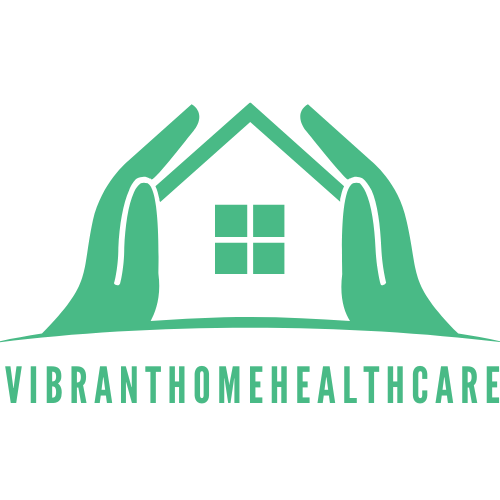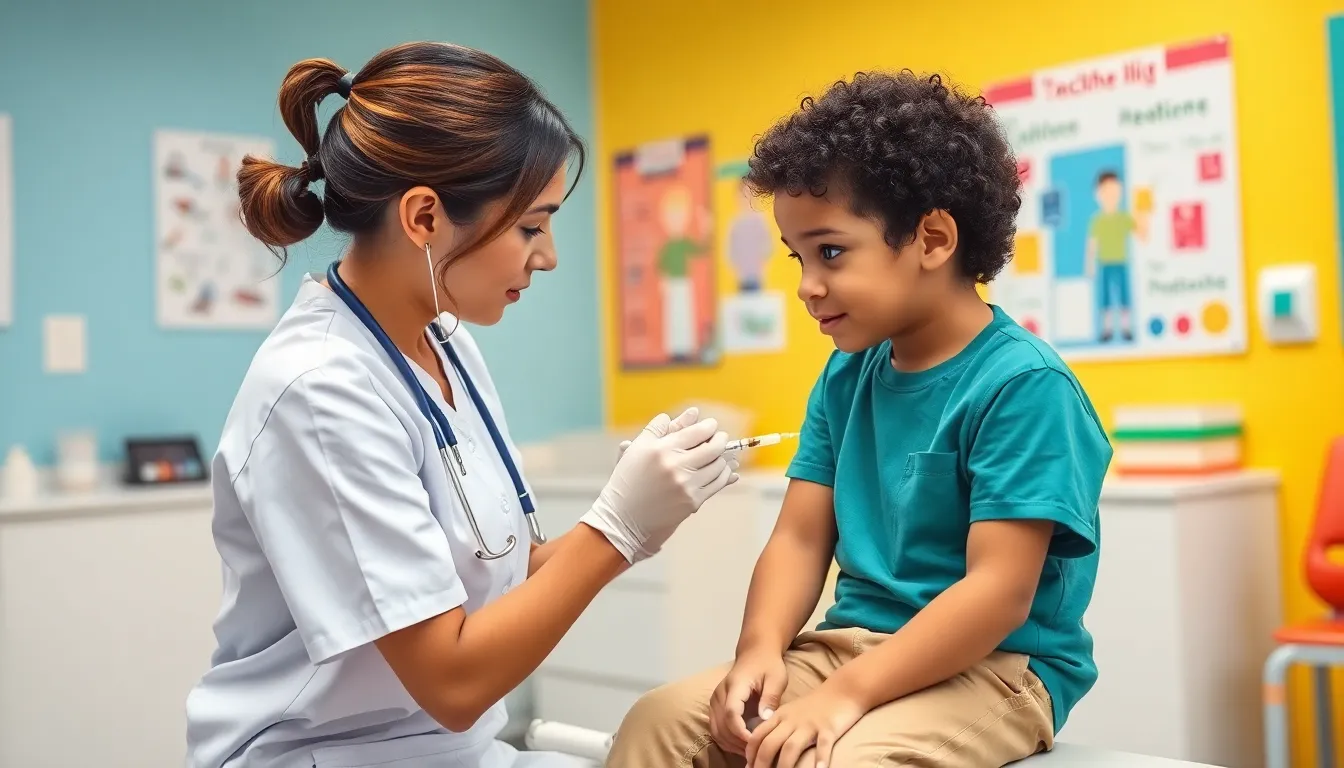Navigating the world of pediatrics residency programs can feel like trying to find a needle in a haystack—if the haystack was also filled with tiny toys and squeaky rubber ducks. Aspiring pediatricians face a whirlwind of choices, each promising to shape them into the superheroes of child healthcare. With so many options, how does one choose the right program without losing their sanity—or their sense of humor?
In this article, we’ll dive into the ins and outs of pediatrics residency programs. From hands-on training to mentorship opportunities, these programs are designed to turn medical graduates into experts in caring for the littlest patients. Get ready to explore how these residencies can equip future pediatricians with the skills they need to tackle everything from the common cold to the occasional tantrum, all while keeping a smile on their faces.
Table of Contents
ToggleOverview of Pediatrics Residency Programs
Pediatrics residency programs focus on developing physicians trained in child healthcare. Aspiring pediatricians participate in intensive training over three years, gaining experience in various pediatric specialties. These specialties include general pediatrics, neonatology, and pediatric cardiology.
During residency, trainees engage in hands-on learning, which builds their practical skills. Rounding in hospitals frequently occurs; residents assess patients, collaborate with healthcare teams, and manage care plans. Guidance from experienced mentors supports their growth as healthcare providers.
Program structures vary across institutions, emphasizing different aspects of child health. Some programs prioritize community outreach, allowing residents to experience diverse patient populations. Others may focus on research, encouraging residents to contribute to pediatric advancements.
Residencies also incorporate educational opportunities, including lectures and workshops. Residents enhance their knowledge of pediatric diseases and current treatment options through these settings. Regular evaluations help track the development of their clinical competencies.
Networking with peers and professionals takes place within and outside residency programs. This connection enriches the learning environment and opens avenues for future collaboration. Graduates leave residency equipped with the necessary skills to navigate complex medical scenarios in pediatrics.
These programs ultimately shape well-rounded healthcare professionals ready to improve the lives of children. As physicians enter practice, their training equips them to face the unique challenges of child medical care.
Structure of Pediatrics Residency Programs

Pediatrics residency programs encompass a structured approach that lays the foundation for skilled pediatricians. Training occurs over three years with defined phases and an extensive curriculum.
Duration and Phases
Residency lasts three years, segmented into distinct phases. Interns begin with a focus on general pediatrics, gaining foundational skills. The second year typically expands into subspecialty rotations, such as neonatology or pediatric cardiology. During the final year, residents take on increased responsibilities, often leading patient care and managing healthcare teams. Each phase prepares trainees for the complex challenges of pediatric medicine while promoting hands-on experience.
Curriculum Components
The curriculum includes various components that enhance knowledge and skills. Core areas cover general pediatrics, developmental issues, and acute care management. Lectures and workshops supplement clinical experiences with essential information on the latest pediatric diseases and treatments. Opportunities for community outreach provide real-world applications of their learning. Regular evaluations assess clinical competence, ensuring residents meet the high standards of pediatric care. Such comprehensive training equips future pediatricians to deliver effective, empathetic healthcare to children.
Application Process for Pediatrics Residency Programs
The application process for pediatrics residency programs requires careful preparation and attention to detail. It’s vital to understand the specific requirements of each program to enhance the chances of acceptance.
Eligibility Criteria
To apply, candidates must possess a medical degree from an accredited institution. Most programs require completion of the United States Medical Licensing Examination (USMLE) or the Comprehensive Osteopathic Medical Licensing Examination (COMLEX). Letters of recommendation play a crucial role, and candidates should secure references from faculty familiar with their clinical skills. Involvement in pediatric-related extracurricular activities and research strengthens applications. Some programs may prefer applicants with prior experience in pediatrics through clerkships or internships.
Interview Process
The interview process typically conducts evaluations over a few months each year. Programs select candidates based on application materials and schedule interviews with the most promising applicants. Interviews often consist of multiple sessions, including one-on-one interviews with faculty and group interviews with residents. Each session assesses clinical reasoning, communication skills, and compatibility with the program. Applicants may also engage in informal meetings with current residents, offering insight into the residency culture. Successful interview performance can significantly influence final decisions on program admissions.
Benefits of Pediatrics Residency Programs
Pediatrics residency programs offer significant advantages to budding pediatricians. These experiences enhance both practical skills and long-term career trajectories.
Training Opportunities
Training opportunities in pediatrics residency programs are comprehensive and multifaceted. Residents engage in hands-on experiences that hone their clinical skills. Daily interactions with patients provide invaluable learning moments. Specialized rotations in areas such as neonatology and pediatric cardiology expose trainees to a wide range of medical conditions. Learning under experienced mentors fosters professional growth and confidence. Structured evaluations track development, ensuring competencies align with pediatric care standards. Opportunities for community outreach allow residents to apply their knowledge in real-world settings. These diverse training experiences prepare residents to handle the complexities of child healthcare effectively.
Career Prospects
Career prospects for pediatricians completing residency programs remain robust. Graduates often find positions in various settings such as hospitals, private practices, and academic institutions. Demand for pediatric healthcare services continues to grow, driven by increasing awareness of child health issues. Job prospects enhance for those who pursue fellowships in subspecialties like pediatric emergency medicine or developmental-behavioral pediatrics. Networking during residency creates connections that facilitate job placement post-training. Additionally, pediatricians enjoy a rewarding career focused on improving children’s lives, contributing to lasting community health. The combination of practical training and supportive networks positions recent graduates for success in the pediatric field.
Challenges in Pediatrics Residency Programs
Pediatrics residency programs present several challenges that aspiring pediatricians encounter during their training. Intense workloads often create high stress, leading to burnout among residents. Navigating the balance between patient care responsibilities and personal life poses difficulties for many trainees.
Time management skills become critical as residents juggle patient interactions, learning objectives, and administrative tasks. Residents frequently push themselves to excel, making it easy to overlook their well-being. Over time, this can result in fatigue that negatively impacts both their studies and patient care.
Another challenge stems from exposure to diverse cases. While this variety enhances learning, it can also overwhelm residents who must quickly adapt to unfamiliar conditions. Residents frequently report feeling pressure to perform at a high level despite limited experience, which can affect confidence.
Mentorship relationships also pose challenges. Finding a mentor who provides guidance and support isn’t always straightforward. Residents sometimes navigate complex evaluations and feedback from multiple supervisors, leading to conflicting advice.
Additionally, application processes for fellowship placements contribute to stress. Competition is fierce, with numerous candidates vying for limited positions. As a result, residents often experience anxiety during interviews and selections, worrying about their future career paths.
Coping strategies vary. Some residents engage in peer support networks to mitigate stress. Others focus on time management techniques to improve efficiency. Learning to communicate effectively with healthcare teams also helps enhance collaborative efforts.
Ultimately, despite these challenges, pediatrics residency programs prepare trainees for rewarding careers in child healthcare. Navigating these obstacles fosters resilience and adaptability, essential qualities for successful pediatricians.
Conclusion
Pediatrics residency programs play a crucial role in shaping the next generation of pediatricians. By providing comprehensive training and mentorship, these programs equip residents with the skills needed to address the unique challenges of child healthcare. The rigorous curriculum and hands-on experiences foster not only medical expertise but also resilience and adaptability.
As aspiring pediatricians navigate their residency journey, they gain invaluable insights and connections that enhance their professional development. The combination of practical training and networking opportunities positions graduates for successful careers in a rapidly evolving field. Ultimately, the commitment to excellence in pediatric care ensures that they will make a significant impact on the health and well-being of children in their communities.




